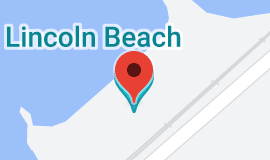
Lincoln Beach received more money than the city had allotted.
Mayor LaToya Cantrell’s administration is cheering a major funding boost for Lincoln Beach, which officials say will kickstart the reopening of what once was a rollicking concert venue, amusement park and recreation spot for Black New Orleanians during segregation. The administration says it has now secured $25 million, nearly triple the amount it previously committed, giving leeway to designers preparing the 15-acre peninsula for public access after six decades of decay. Plans for now are limited to clearing hazards, improving access and other necessities for a simple recreation area. But more funding could become available in the future as the site is fully built out. The $25 million announced last month will come from a combination of local bond funds, federal grants stemming from the Deepwater Horizon oil spill and Federal Emergency Management Agency reimbursements. It should help solve tricky challenges like connecting bathrooms to the utility grid, said Cheryn Robles, a City Hall environmental specialist who is managing the project. For instance, the floodwall installed along Hayne Boulevard after Hurricane Katrina severed access to the municipal waste system, creating an engineering headache, Robles said. The extra money could allow for a utilities bridge over Hayne Boulevard and the railroad tracks, with fewer permitting constraints. “By having the funding available, we’re going to be able to get the utilities across and accelerate reopening,” Robles said.
nola.com
There are no set plans yet especially on the opening.
The utilities bridge is still just an idea under consideration, and an overall time line for reopening hasn’t been set, Robles said. She hopes to complete designs for utilities, pedestrian access, a permeable parking lot and other elements by the end of the summer. Groundbreaking is targeted for late this year. Once the beach reopens, the 10-acre parking lot across Hayne Boulevard could be partially devoted to a farmer’s market. The city abandoned Lincoln Beach after legal desegregation in 1963, and it closed the next year. Black residents started going to the more centrally located Pontchartrain Beach, though they encountered hostility from some White residents who eventually stopped going to the beach, according to historian Andrew Kahrl. Pontchartrain Beach, which closed in the early 1980s, is also now undergoing redevelopment efforts. As City Hall pushes ahead with basic reopening plans, it will also soon hire a master planner to scope a larger vision for what the site should eventually become. That will likely be some combination of natural features and developed amenities, striking a balance between the bustling hub Lincoln Beach once was and the serene, wooded hideaway it is now. “My mother used to tell me about Lincoln Beach,” said District E Council member Oliver Thomas. “What part of that history can be preserved? How do we accentuate the natural topography?” Next month, Lincoln Beach will be considered for inclusion in the National Register for Historic Places, which would unlock tax credits and other additional funding possibilities.
The beach is legally closed but some still go there and there have been efforts off and on to fix it.
Although Lincoln Beach festered for decades and is legally closed to the public, generations of residents have braved railroad tracks and hazardous structures to enjoy it while several mayoral administrations have promised — and then failed — to restore it. A group of community activists informally adopted Lincoln Beach during the pandemic, regularly clearing litter, hanging signage and installing a makeshift drainage system. They incorporated into a nonprofit group called New Orleans For Lincoln Beach and gathered input from more than 100 residents about what Lincoln Beach should become. The group found that there was a tension between those who favor “keeping the wilder, less developed aspects of the beach as it exists today and building towards the more formal, developed space that it once was,” according to the group’s report. The group’s executive director, Blyss Wallace, said most of the clamoring for heavier development has come from people who are less familiar with the site. “There is going to have to be some development, I think we just want it to be as natural as possible,” Wallace said.
The money is not tied to a specific plan.
The $25 million announced last month isn’t tied to a specific estimate, and the administration hasn’t said what exactly it will be used for. A 2021 site assessment estimated a basic reopening plan would cost about $16 million. Robles said the final amount can’t be known until the city receives construction bids, which have been highly volatile since the pandemic. A little more than half the money will come from a fund that holds FEMA reimbursements for recovery projects the city has already paid for. FEMA had not previously been identified as a possibility for Lincoln Beach in public presentations, which have focused on bond funding, Deepwater Horizon grants and smaller amounts from elsewhere. The administration did not respond to questions about tapping that fund, including whether it would deprive other projects of funding.
Get rid of an eyesore and restore the beach.



